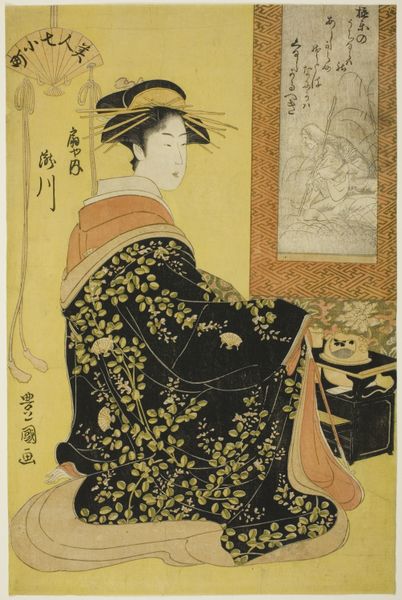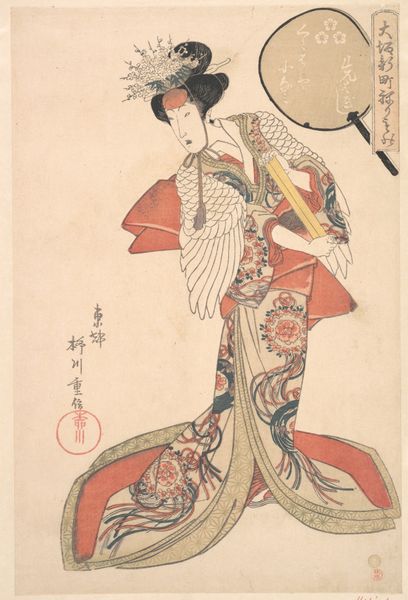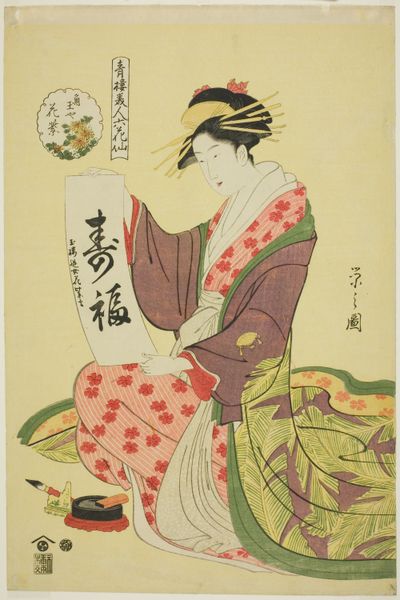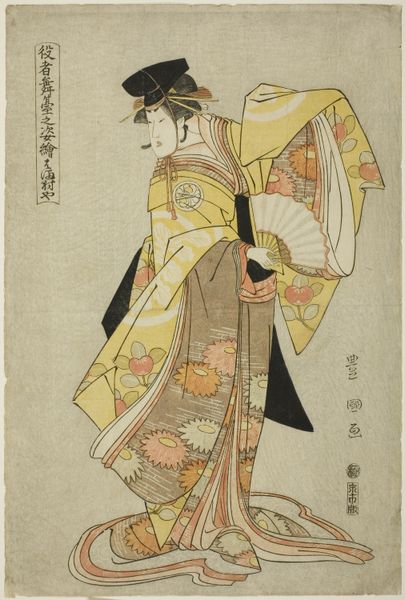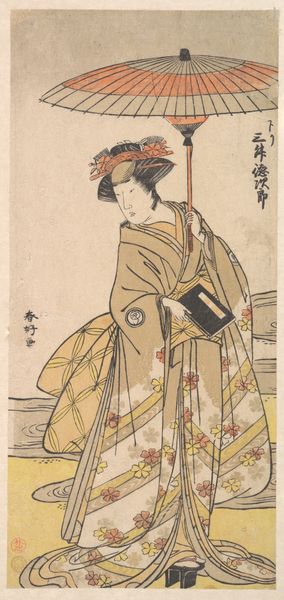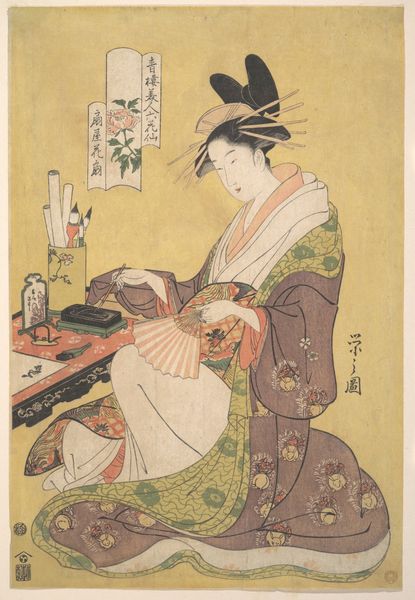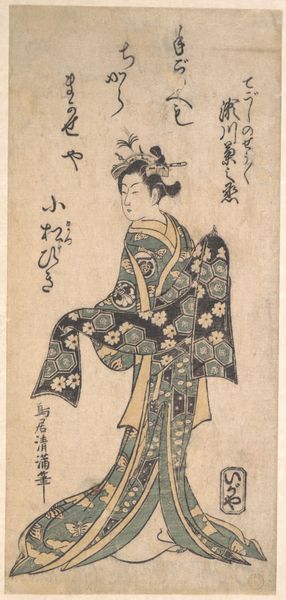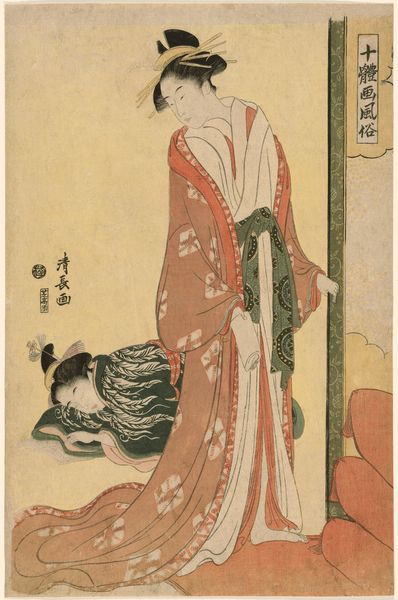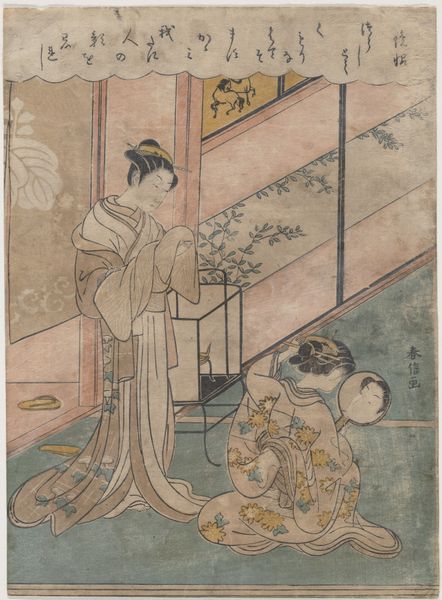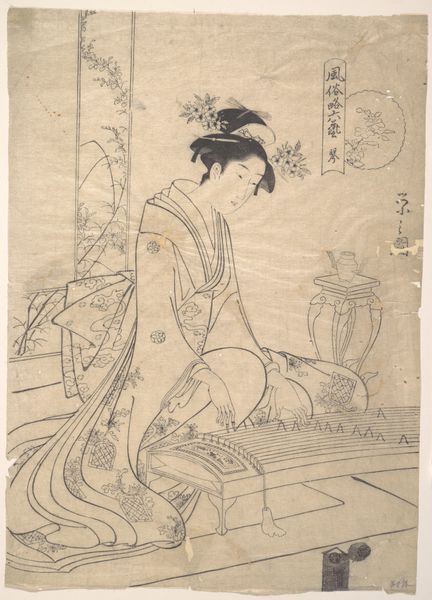
print, woodblock-print
#
portrait
# print
#
asian-art
#
ukiyo-e
#
figuration
#
woodblock-print
Dimensions: H. 14 11/16 in. (37.3 cm); W. 9 7/8 in. (25.1 cm)
Copyright: Public Domain
Curator: Before us is "Takigawa of the Ogiya Pleasure House," a woodblock print made sometime between 1800 and 1833 by Utagawa Toyokuni I. Editor: It strikes me as delicate, almost ethereal. The composition seems to be built around soft curves and pale hues. I wonder, how does the materiality of the woodblock print contribute to this effect? Curator: The medium is essential. Ukiyo-e, "pictures of the floating world," flourished during the Edo period and depicted courtesans, actors, and scenes of urban life. Woodblock printing allowed for mass production, bringing art to a wider audience, solidifying the image of feminine beauty, desire, and ultimately consumption that sustained the economy during Japan's cultural enlightenment. The precision in the cutting and layering of colors is critical. Editor: The formal qualities are interesting, too. Notice how the curving lines of Takigawa's body are echoed in the floral motifs on her kimono, yet countered by the geometry of the room screen and table nearby? These opposing, though integrated forms generate a sophisticated rhythm for the eyes. What's that peculiar turtle shape on the kimono, I wonder? Curator: Excellent observation! The turtle is called Minogame. They were often employed as a symbolic gesture wishing for longer, happier life for the person depicted. But it's also just a stylish pattern. This portrait exists within a cultural and economic system where status, luxury, and pleasure are all carefully coded and readily available for viewing. Editor: I see, so the very fabric she wears speaks volumes about her societal position and, by extension, about the pleasure quarters' broader impact. In that era, how did society grapple with the representation of women like Takigawa within these systems? Curator: It was complicated, to say the least. There was often a tension between the romanticized depictions of these women in art and the often-harsh realities of their lives. The prints can be seen as both celebratory and, in some ways, exploitative. They shaped public perception and influenced the social dynamics of the time. Editor: The contrast you mention reminds us how art is never truly divorced from the currents of its context. These prints invite us to scrutinize both their inherent elegance and their cultural resonance, something beyond the mere aesthetic experience. Curator: Indeed. Examining Takigawa gives us access into a multifaceted cultural landscape that still has important conversations for us today.
Comments
No comments
Be the first to comment and join the conversation on the ultimate creative platform.
